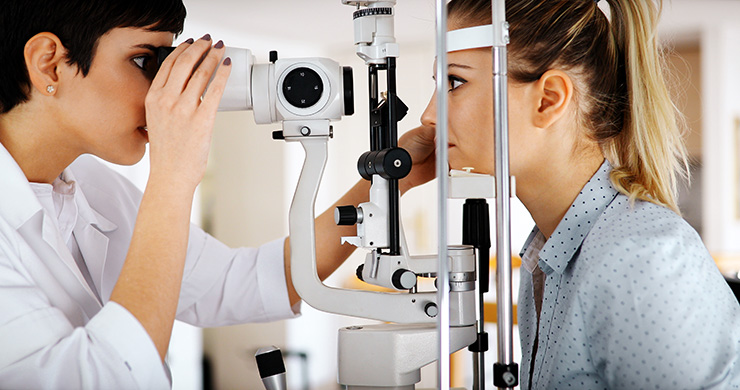Just How an Eye Doctor Can Help Prevent Vision Complications in Chino
Just How an Eye Doctor Can Help Prevent Vision Complications in Chino
Blog Article
Checking Out the most recent Technical Developments in Optometry and What They Mean for Optometrists
From the precision of Optical Coherence Tomography to the nuanced insights supplied by AI-driven analysis devices, these technologies are setting new standards in client assessment and therapy. As these innovations permeate the technique, eye doctors are faced with the challenge of welcoming these devices to boost patient end results.
Developments in Diagnostic Devices
Progressing the area of optometry, advancements in diagnostic devices have transformed the means eye treatment professionals analyze and diagnose eye conditions and aesthetic disabilities. The past years has actually witnessed substantial technical improvements, making it possible for more accurate and comprehensive examinations. Optical Comprehensibility Tomography (OCT), for instance, gives high-resolution cross-sectional pictures of the retina, permitting the early discovery of conditions such as glaucoma and age-related macular degeneration. This non-invasive imaging strategy has become vital in contemporary optometric technique.
An additional secret advancement is the intro of advanced corneal topography systems, which map the surface area curvature of the cornea with precision. These tools are specifically advantageous for fitting call lenses and identifying corneal conditions. Electronic retinal imaging has actually changed traditional ophthalmoscopy, providing thorough, panoramic sights of the retina that promote comprehensive aesthetic assessments.
The development of wavefront aberrometry has actually additionally been essential, making it possible for the analysis of refractive mistakes with unparalleled accuracy (Opticore Optometry). This technology assists in tailoring restorative lenses and enhancing surgical results for refractive surgical treatments. Collectively, these analysis improvements encourage eye doctors to provide superior client treatment, making sure very early intervention and tailored therapy strategies, inevitably improving aesthetic health end results
AI in Individual Administration
Structure on the foundation of cutting-edge diagnostic tools, the unification of fabricated intelligence (AI) in patient administration represents a transformative leap for optometry. AI systems are progressively employed to boost efficiency, precision, and customization in person care.
Additionally, AI-driven platforms assist in streamlined individual interactions and management processes. Automated organizing, online consultations, and individualized follow-up plans not only enhance person satisfaction but likewise optimize time monitoring for specialists. These systems can triage individuals based on the necessity of their conditions, ensuring that those in vital requirement receive prompt interest.
Additionally, AI boosts decision-making by offering optometrists with evidence-based recommendations and treatment paths. By incorporating data from electronic wellness documents, AI devices offer understandings that educate medical decisions, lowering the danger of errors and boosting individual outcomes. As AI remains to develop, its role in patient administration will likely expand, reshaping the landscape of optometric care.
Advancements in Retinal Imaging
In the world of optometry, retinal imaging has observed amazing technological advancements that are boosting analysis capabilities and client care. Developments such as Optical Comprehensibility Tomography (OCT) and fundus digital photography have actually reinvented how eye doctors visualize and examine the retina. OCT, specifically, provides high-resolution, cross-sectional images of the retina, allowing for the detailed evaluation of its layers. This capacity is very useful for early detection and monitoring of conditions like glaucoma, diabetic person retinopathy, and age-related macular degeneration.
Improved imaging methods like OCT angiography are more refining analysis precision. This non-invasive method maps blood flow in the retina, providing vital understandings right into vascular wellness without the need for color injections. In addition, adaptive optics technology is being incorporated right into retinal imaging systems to correct eye aberrations, supplying unprecedented picture quality. Such improvements facilitate the recognition of min retinal changes that could symbolize disease development. discover here
Additionally, advancements in man-made intelligence are boosting retinal imaging by enabling automated analysis of large datasets. These systems aid eye doctors in determining patterns indicative of pathology, therefore improving diagnostic accuracy and efficiency. Collectively, these developments are changing retinal imaging into a foundation of modern eye care, improving end results and increasing healing opportunities.
Teleoptometry's Growing Function
Teleoptometry is progressively coming to be an essential element of eye treatment, driven by developments in data and analysis devices. As optometry welcomes electronic makeover, teleoptometry facilitates remote assessments, permitting optometrists to expand their solutions beyond traditional boundaries. This is specifically valuable in underserved and rural areas where accessibility to specialized eye care is index commonly minimal. By leveraging high-resolution video clip conferencing and advanced retinal imaging, optometrists can carry out detailed eye examinations from afar, ensuring prompt medical diagnosis and therapy.
The assimilation of man-made intelligence (AI) further enhances teleoptometry, enabling the analysis of aesthetic data and assisting in the discovery of ocular conditions such as glaucoma and diabetic person retinopathy. AI-powered formulas can swiftly analyze complicated imaging information, giving optometrists with valuable insights that boost scientific decision-making.
Moreover, teleoptometry sustains continuity of treatment with smooth integration with electronic wellness records (EHRs), enabling optometrists to preserve comprehensive individual backgrounds. When consulting with different professionals., this makes certain that individuals receive tailored and constant treatment also.
Regardless of these benefits, obstacles stay, including continue reading this making certain data security and handling individual expectations. Nonetheless, teleoptometry represents a substantial stride towards even more obtainable, efficient, and patient-centered eye treatment. As technology progresses, its duty is positioned to broaden better.

Future Patterns in Eye Care
A myriad of cutting-edge trends is readied to improve the future of eye treatment, driven by technical advancements and the advancing demands of people. One considerable fad is the assimilation of expert system (AI) in diagnostics, which promises to improve the accuracy and performance of eye examinations. AI formulas can evaluate substantial quantities of data from retinal photos, potentially identifying problems like diabetic retinopathy and glaucoma earlier than conventional approaches.
Moreover, individualized medicine is obtaining traction in optometry, with hereditary testing educating customized treatment strategies. This technique intends to maximize individual end results by customizing treatments to specific hereditary profiles. Wearable modern technology, such as smart contact lenses, is likewise coming up, providing real-time tracking of intraocular stress or glucose degrees, thus giving constant understandings into systemic and ocular health and wellness.
The fostering of increased fact (AR) and digital reality (VIRTUAL REALITY) in training and patient education and learning is one more emerging pattern. These modern technologies supply immersive experiences that can boost understanding and abilities both for optometrists and clients. As these trends develop, optometrists must remain abreast of technical developments to supply advanced care, ensuring enhanced client results and satisfaction in the dynamic landscape of eye treatment.
Verdict

Collectively, these diagnostic improvements encourage eye doctors to deliver superior individual treatment, making sure very early intervention and tailored treatment methods, ultimately improving aesthetic health and wellness outcomes.

As these innovations continue to evolve, optometrists should adapt and incorporate them into technique, ultimately enhancing process performance and boosting the standard of eye treatment delivered to individuals.
Report this page